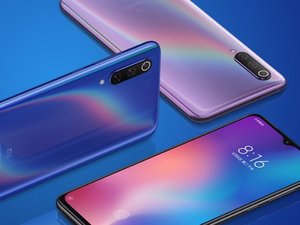Hi xiaoman,
Without knowing which model of phone you have, I can't give you specific information, but in the meantime I'll offer what knowledge I can.
First off, yes, it would definitely be well worth your time to open up the phone and check the internal connections. There is a small possibility that the connector to the motherboard has come unseated, although I personally see that as a pretty slim chance; the screen disassembly procedures I looked at for a few different models seem to indicate that the connectors are reasonably well secured by midframe components held in place with either adhesive or screws.
Personally I believe it's more likely that the screen itself has sustained some minor damage that's not visible to the naked eye; there are delicate connections between the flex cable and the circuit paths built into the LCD glass itself that can come loose and are not repairable.
So yeah, you'll want to locate a screen replacement guide for your specific phone and follow the instructions at least to the point where you disconnect the display. Unplug it and check both sides with a magnifying glass, then clean them with 90% or higher isopropyl alcohol and reassemble. If the symptoms are still present you might be able to pin them down by gently pressing on various parts of the screen before you reattach it to the midframe; if you find a particular spot on the display that causes the problem, then you've pretty much proved that you need to either resign yourself to living with it, or replace the screen.
If you want to post your model information, we may be able to give you more information and possibly suggestions on where you can get a decent quality replacement.
Good luck; let us know how it goes.
EDIT: Okay, now that I know what your phone is, I can give you more information.
First of all, there are two distinct ways to replace your screen. In the first, the replacement screen comes with the frame already attached. Unfortunately, that means everything inside the frame - meaning every single part inside the phone - must be transferred to the new frame. This has the advantage of not having to remove the screen from the frame and replace it.
Which brings us to the other method, of just replacing the LCD itself without the frame. That means you have to carefully detach the LCD from the frame then resecure it with adhesive. It leaves a lot more to chance, as you have to make sure it's sealed well against liquid ingress and glued down well so it doesn't come off again. The advantage here is that not having to replace the frame means much less work removing parts and swapping them to the new frame.
So it's a trade-off, less work on transferring parts vs. dealing with the delicate LCD. The LCD without the frame is marginally cheaper to buy, but the screens I've seen available are pretty cheap compared to some of the screens on newer model phones, so that's not a significant factor in my opinion.
I'm pretty experienced with phone repairs, so personally I would probably go with the LCD alone, but I feel replacing the frame as well is a safer option for assuring the integrity of the LCD placement. Of course, if your frame is bent, scuffed or damaged, that would help sway the decision.
I didn't locate a guide to just the LCD replacement, but there are several YouTube videos available; it's easy enough to find them with a quick search. Here's a guide I did find that shows the procedure for replacing the frame; it appears to be well done and complete.
Xiaomi Poco X3 NFC screen replacement - repair guide
The screens themselves are readily available; here's just one example I found on AliExpress that comes with or without the frame and got good reviews as well.
100% Tested Original Lcd For Xiaomi Poco X3 Lcd Touch Screen Digitizer For Xiaomi Poco X3 Nfc Lcd Display M2007j20cg Lcd - Mobile Phone Lcd Screens - AliExpress
That should get you going. After reviewing the screen replacement guide, I'm pretty sure you're going to end up needing to replace the screen, but like I said, it's worth checking first.
Oh, and if you replace just the LCD without the frame, be sure you purchase precut adhesive for the screen, and in either case you'll need new adhesive for the rear cover and likely for the battery too. I always buy a couple of each; they're cheap and unfortunately easy to mess up so having a spare on hand is a good way to avoid having to wait while you order a replacement if you make a mistake.

 2
2 
 44
44  90
90